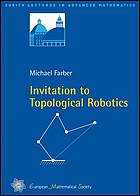

Most ebook files are in PDF format, so you can easily read them using various software such as Foxit Reader or directly on the Google Chrome browser.
Some ebook files are released by publishers in other formats such as .awz, .mobi, .epub, .fb2, etc. You may need to install specific software to read these formats on mobile/PC, such as Calibre.
Please read the tutorial at this link: https://ebookbell.com/faq
We offer FREE conversion to the popular formats you request; however, this may take some time. Therefore, right after payment, please email us, and we will try to provide the service as quickly as possible.
For some exceptional file formats or broken links (if any), please refrain from opening any disputes. Instead, email us first, and we will try to assist within a maximum of 6 hours.
EbookBell Team

5.0
100 reviewsSynopsis:
This book discusses several selected topics of a new emerging area of research on the interface between topology and engineering. The first main topic is topology of configuration spaces of mechanical linkages. These manifolds arise in various fields of mathematics and in other sciences, e.g., engineering, statistics, molecular biology. To compute Betti numbers of these configuration spaces the author applies a new technique of Morse theory in the presence of an involution. A significant result of topology of linkages presented in this book is a solution of a conjecture of Kevin Walker which states that the relative sizes of bars of a linkage are determined, up to certain equivalence, by the cohomology algebra of the linkage configuration space. This book also describes a new probabilistic approach to topology of linkages which treats the bar lengths as random variables and studies mathematical expectations of Betti numbers. The second main topic is topology of configuration spaces associated to polyhedra. The author gives an account of a beautiful work of S. R. Gal, suggesting an explicit formula for the generating function encoding Euler characteristics of these spaces. Next the author studies the knot theory of a robot arm, focusing on a recent important result of R. Connelly, E. Demain, and G. Rote. Finally, he investigates topological problems arising in the theory of robot motion planning algorithms and studies the homotopy invariant TC(X) measuring navigational complexity of configuration spaces. This book is intended as an appetizer and will introduce the reader to many fascinating topological problems motivated by engineering.